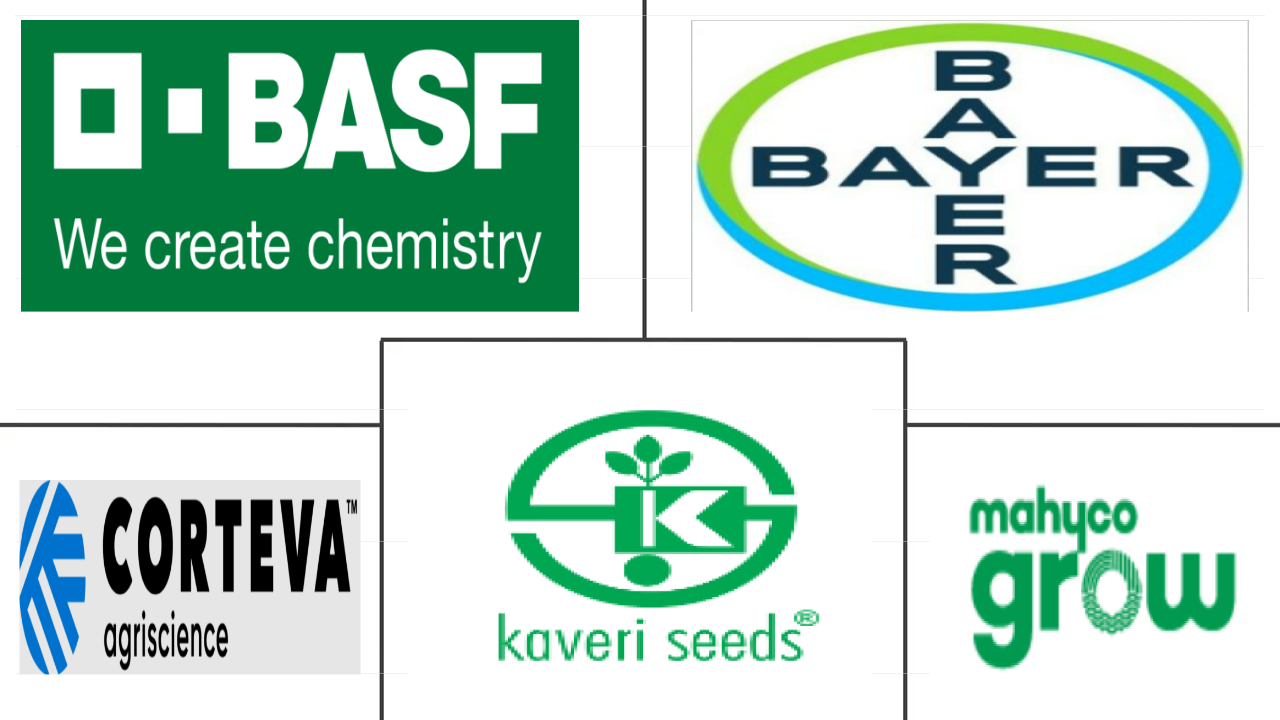Market Size of cotton seed Industry (seed for sowing)
| Icons | Lable | Value |
|---|---|---|
|
|
Study Period | 2017 - 2030 |
|
|
Market Size (2024) | USD 1.48 Billion |
|
|
Market Size (2030) | USD 2.08 Billion |
|
|
Largest Share by Breeding Technology | Hybrids |
|
|
CAGR (2024 - 2030) | 5.82 % |
|
|
Largest Share by Region | Asia-Pacific |
Major Players |
||

|
||
|
*Disclaimer: Major Players sorted in no particular order |
Cotton Seed Market (seed For Sowing) Analysis
The Cotton Seed Market (seed For Sowing) size is estimated at 1.48 billion USD in 2024, and is expected to reach 2.08 billion USD by 2030, growing at a CAGR of 5.82% during the forecast period (2024-2030).
1.48 Billion
Market Size in 2024 (USD)
2.08 Billion
Market Size in 2030 (USD)
8.10 %
CAGR (2017-2023)
5.82 %
CAGR (2024-2030)
Largest Market by Breeding Technology
94.56 %
value share, Hybrids, 2023
The high share of hybrids is due to the adoption of transgenic cotton hybrids, which are insect-resistant, in the major cotton-growing countries worldwide.
Largest Market by Country
54.88 %
value share, India, 2023
Globally, India is the second leading producer of cotton and has increased productivity due to an increase in the use of hybrid seeds and intensive cultivation practices.
Fastest-growing Market by Breeding Technology
5.85 %
Projected CAGR, Hybrids, 2024-2030
The fastest growth of hybrids is expected due to the increasing area under transgenic cotton and the rise in the countries approved for transgenic cotton cultivation.
Fastest-growing Market by Country
11.47 %
Projected CAGR, Turkey, 2024-2030
It is one of the top eight cotton producers in the world, and demand from the Turkish textile industry is a significant driver for the country in adopting high-quality seeds.
Leading Market Player
15.32 %
market share, Bayer AG, 2022

The company is the market leader with its high-performance hybrid cotton varieties, which are developed using plant biotechnology and modern plant breeding practices.
Transgenic hybrids occupy the major share of the cotton seed market, with higher demand for insect-resistant hybrids
- The hybrid segment has a higher share in the global cotton seed market, which accounted for 94.5% of the market in 2022. The high-yielding and pest-resistant properties of hybrid seeds help reduce crop losses and production costs.
- In transgenic cotton hybrids, insect-resistant hybrids are highly cultivated and held around 88.4% of the market in the transgenic cotton market in 2022. The cotton crop can be damaged right from the seedling stage by several pests, such as grasshoppers, thrips, aphids, and jassids. Spiny bollworms, spotted bollworms, American bollworms, and pink bollworms are prominent among them. Insect-resistant cotton hybrids help in reducing insect attacks and increase yield.
- Asia-Pacific was the primary region in the world concerning the hybrid cotton seed market because the region faces a significant challenge of crop losses due to pests and diseases. In 2022, Asia-Pacific accounted for 76% of the global hybrid cotton seed market.
- Herbicide-tolerant cotton hybrids are popular in North America, which accounted for 88.9% of the global herbicide-tolerant cotton hybrid market in 2022. Weeds are a major problem in North America. To prevent weeds without affecting the crop, growers use herbicide-tolerant seeds.
- The open-pollinated varieties of cotton are mainly cultivated in rainfed conditions in Europe, which is estimated to register a CAGR of 9.1% during the forecast period due to the low cost of seeds and the ability to withstand water stress.
- Therefore, with the increasing usage of transgenic hybrids for their higher yield and lower cost of production, as well as the demand from textile and other industries, the cotton seed market is estimated to witness a CAGR of 5.8% during the forecast period.
Asia-Pacific dominates the market with a large area under cotton cultivation and high demand from processing industries
- Asia-Pacific is the largest cotton seed market with a significantly large cultivation area, driven primarily by the demand for cotton from the textile industry. India accounted for the major share of 73.7% of the Asia-Pacific market by value in 2022, owing to its export demand.
- In the Asia-Pacific region, hybrid seeds hold a significant edge over open-pollinated varieties and hybrid derivatives in the cotton seed market, both in terms of volume and value. This dominance can be attributed to the rising crop losses caused by pests and diseases, where hybrids perform better with enhanced resistance to insects and diseases.
- North America is the second largest producer globally. It accounted for 11.9% of the global cotton seed market value in 2022. The United States is the largest cotton-producing and exporting country in North America, with 11.1% of the global share in terms of value in 2022.
- Europe is the fastest-growing seed market owing to the increasing adoption rate of commercial seeds. Hybrids are used more than OPVs in the European Union due to the need for high yield and high stability in stress conditions. In 2022, the hybrid seeds segment accounted for 92.6% of the total cotton seed market in the region and was growing at a faster rate than the OPVs.
- Sub-Saharan Africa has a climate favorable for pest growth, resulting in a severe attack of pests on cotton and subsequent yield losses. For instance, in West Africa, an average of 25–35% of cotton yield has been reduced between 2017 and 2022 because of pests. Due to this reason, demand for hybrids is expected to increase as hybrids are resistant to pests and have high yield potential.
- The rising adoption of hybrids and rising demand for cotton from the textile industry are estimated to drive the seed market.
